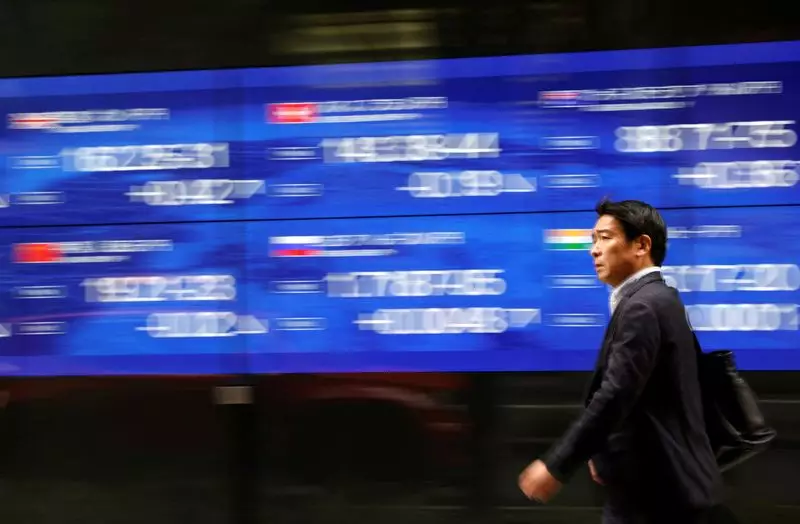The global financial landscape is currently characterized by a volatile interplay between political uncertainty and market sentiment. Recent events in Europe, particularly concerning France, have exacerbated existing fears within the currency market, while the broader global equities realm has been buoyed by advancements in the technology sector. This article delves into the factors driving these dynamics, particularly the euro’s decline amidst political unrest and the dollar’s strengthening amid upcoming U.S. Federal Reserve decisions.
As political instability grips France, the euro has taken a significant hit, dipping by as much as 0.57% to $1.05155. The primary catalyst for this pressure is the potential collapse of the French government, as Prime Minister Michel Barnier faces a critical deadline with the budget concessions. The looming threat of a no-confidence vote, supported by the far-right National Rally party, has sown seeds of doubt among investors regarding the stability of both the French government and the eurozone economy.
Consequently, French stock indices are projected to open lower, with a 1.4% drop indicated for the CAC 40. Analysts caution that should the Barnier administration fall, the resultant downward spiral could have considerable implications for the euro, particularly against safe-haven currencies like the Swiss Franc. The scenario brings to light how political turmoil can swiftly influence currency values and market behaviors, creating a cycle of uncertainty that can undermine investor confidence.
In contrast to the euro’s struggles, the U.S. dollar has demonstrated considerable strength, especially in the context of President-elect Donald Trump’s recent remarks. His warnings to BRICS nations about the implications of attempting to supplant the dollar further solidify its status as the world’s reserve currency. Traders are closely monitoring the U.S. Federal Reserve’s response to economic indicators, particularly the monthly payrolls report that could heavily influence the decision-making process regarding interest rates.
Kyle Rodda, a senior market analyst at Capital.com, suggests that the Federal Reserve’s upcoming policy decisions will act as a dual driver of market volatility this month. If the Fed decides to cut rates and adopts a dovish stance in its guidance, it may pave the way for a year-end market rally often referred to as a “Santa Rally.” The dollar index, which measures the currency against six major competitors, has already seen a 0.24% increase, highlighting traders’ anticipation of forthcoming monetary policy adjustments.
Meanwhile, the tech sector continues to defy broader market challenges, with indices such as the S&P 500 and Nasdaq reaching all-time highs amid strong performance from technology stocks. In Asia, Chinese equities responded positively to encouraging manufacturing data, contributing to a 0.6% rise in mainland blue chips. This growth underscores a disconnection between strong sector performances and overarching global economic concerns, particularly in traditional markets like Europe.
Cryptocurrencies are also experiencing notable movements, with ether nearing a six-month peak. Bitcoin follows suit, hovering just below its record high. These developments reflect a growing appetite for alternative investments amid fluctuations in conventional asset classes, further complicating the investment narrative in today’s markets.
As we analyze market conditions, the interplay between geopolitical factors and economic policies cannot be overstated. The recent rise in oil prices amid geopolitical tensions, specifically the situation in Israel and Lebanon, adds another layer of complexity to the already intricate financial landscape. Brent crude futures and U.S. crude prices have seen increases in response to these tensions, revealing how external events can influence commodity markets and global trade flows.
Gold, traditionally a safe-haven asset, has also faced downward pressure due to a stronger dollar, putting investors in a precarious position as they navigate their options amidst this evolving landscape. The divergence in asset performances calls for a keen understanding of not just local events but also global interconnectedness, as markets respond dynamically to an array of influences.
The current financial landscape epitomizes the challenges and opportunities emerging markets face in light of political uncertainties and monetary policy shifts. Stakeholders across the board must remain agile, adapting their strategies to the shifting tides that characterize today’s markets. Understanding these interconnected variables could prove essential for those looking to navigate the complexities of modern investment landscapes.

